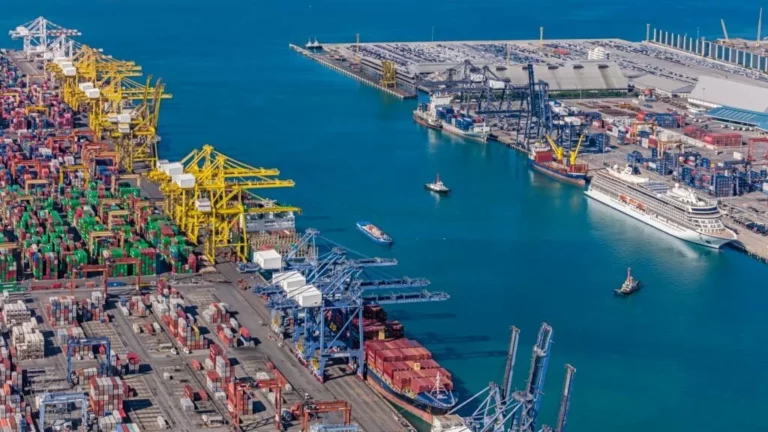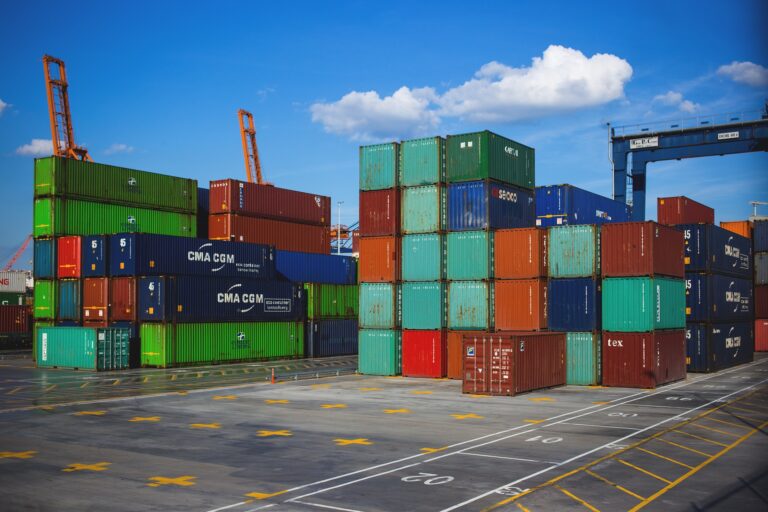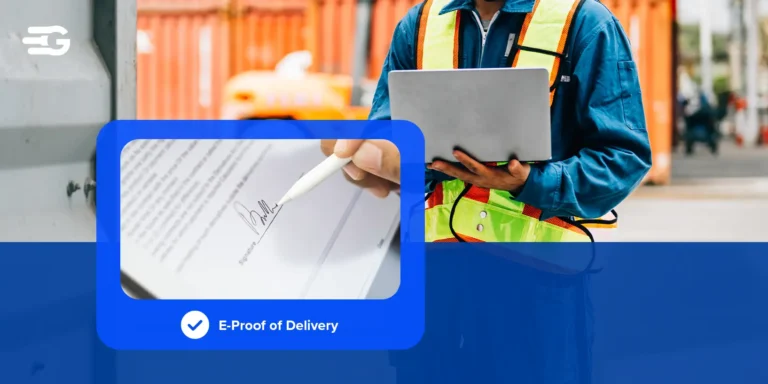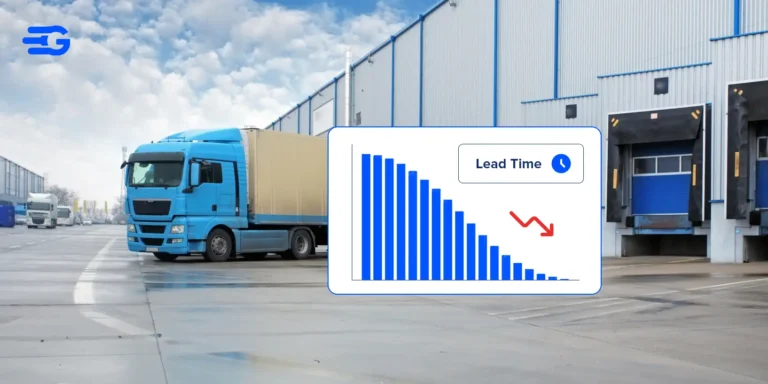Unpacking Carriage Paid To (CPT) in International Trade
Clear communication is crucial in the world of international trade, where items must travel great distances over continents and oceans. The International Chamber of Commerce (ICC) developed the Incoterms for this very reason, to enable smooth international transactions between buyers and sellers.
We’re going to concentrate on one such Incoterm today which is Carriage Paid To (CPT). This term plays a crucial role in delineating responsibilities, costs, and risk transfer for parties involved in international shipping. In this blog, we’ll be exploring the intricacies of CPT, go over its advantages and disadvantages, and offering helpful advice to help you confidently handle your next international commerce project.
What is Carriage Paid To (CPT)
Carriage Paid To (CPT) serves to indicate the responsibilities, costs, and risks associated with the delivery of goods from seller to buyer. Under CPT, the seller assumes the obligation to arrange and pay for the transportation of the goods to a designated destination, typically within the buyer’s country. This establishes a clear framework for the international trade transaction, defining the exact point at which risk and responsibility shift from seller to buyer.
Throughout this process, the seller bears all associated costs, including arranging and paying for the carrier (which could be a shipping line, airline, trucking company, or freight forwarder) to transport the goods by various means such as sea, rail, or road.
It’s important to note that the seller’s responsibility extends to covering any export fees and taxes. The total CPT price quoted by the seller might also encompass additional expenses like Terminal Handling Charges (THC) within its freight calculations.
The Seller’s Journey with CPT
A seller assumes a certain set of responsibilities over the course of international trade when they decide to operate under CPT (Carriage Paid To) Incoterms. Understanding things thoroughly is essential for a smooth transaction. Let’s examine the seller’s responsibilities under CPT:
Managing Transportation: Under CPT, the primary duty is to plan and finance the items’ transportation to the specified location, which is often the buyer’s nation. This includes all expenses related to shipping the items, such as loading them onto the vehicle of choice (truck, ship, plane, etc.). Additionally, the seller is responsible for paying for the products’ offloading at the specified terminal as well as the transportation expenses.
Clarity for All: One of the main benefits of CPT is the distinct division of duties between the buyer and seller. Through precise definitions of risk transfer, delivery requirements, and transportation costs, the Carrier Parity Treaty (CPT) helps to avert miscommunications and disputes that may occur in international trade. Both sides gain from this clarity, which makes the transaction easy to understand and predictable.
Critical Points in the CPT Process for Sellers
Although the CPT provides a well-defined structure for global trade, vendors must manage particular checkpoints during the procedure. These crucial elements guarantee both a happy customer and a seamless delivery of your items.
Preparation is key: The first and most important stage is to prepare your products for export. This means making sure the packing is appropriate and can withstand the rigours of overseas shipping. It is also required that you obtain any export licences or permissions and create commercial invoices that accurately list the products, their prices, and their weights.
Proper documentation: In accordance with CPT, accurate documentation is essential. In order to transport goods by air or sea, you’ll need an Air Waybill or Bill of Lading, which acts as an agreement between the carrier and the seller. In addition, packing lists, a certificate of origin (based on the trade agreement between the countries), and a commercial invoice outlining the shipment are essential for customs clearance at both the origin and destination ports. Verify the accuracy of all papers twice to prevent any delays or issues at customs.
Transferring responsibility: When you give the products to the authorised transporter, that’s when the real deal happens. At this point, the buyer assumes all risk and liability for the products. Make sure you get a signed receipt from the carrier attesting to the fact that the products were delivered in excellent shape. In accordance with CPT standards, this paper acts as proof of delivery.
The Buyer’s Commitments Under CPT
Although CPT provides a well-defined allocation of duties, purchasers are also bound by significant obligations under this Incoterm. For the transaction to go smoothly and successfully, it is necessary to understand these commitments.
Taking Over at the Destination: In accordance with a CPT agreement, the buyer becomes liable as soon as the goods reach the country’s specified destination. This means that at this time, the buyer acquires ownership of the items and the seller bears the risk.
Clearing Customs: Import clearance is one of the main duties of the buyer. This means coordinating with customs officials to guarantee that all required paperwork is in place and that any relevant import taxes or fees are paid. The commercial invoice, packing list, bill of lading or air waybill, and maybe a certificate of origin are the documents that are usually needed. To prevent delays, it is advisable for the buyer to be knowledgeable about local customs laws and practices.
The Final Stretch: In addition, the buyer bears the cost of coordinating and arranging for the items’ additional transportation from the specified terminal to the buyer’s country of final destination. This could entail using their own transportation network or contracting a nearby trucking business.
Proactive Planning is Key: Sensible purchasers will plan ahead for the goods’ subsequent transportation after they arrive, even though the vendor will handle the first leg of the journey. This could entail getting quotations from nearby shipping firms or setting up any licences required for the last leg of the products’ journey inside the buyer’s nation.
Navigating Risk and Insurance in CPT Transactions
Even though CPT provides a transparent allocation of duties between the seller and the buyer, risk is still a factor that needs to be carefully considered. Let’s examine risk allocation and effective risk management techniques under CPT.
Shared Risks, Defined Transfer: CPT provides a precise boundary for the transfer of risk. Up until they are turned over to the approved carrier at the origin site, the seller is responsible for any loss or damage to the goods. The risk is transferred to the buyer at that point.
Insurance: A Smart Option (Even if Not Required): Both parties are wise to think about insurance coverage to reduce potential losses, even though CPT does not require the seller to insure the items. Sellers who want to safeguard themselves during the first leg of their own shipping might choose to get cargo insurance. Contrarily, buyers ought to seriously consider getting insurance to protect the items from the moment of risk transfer, which usually occurs when the goods are turned over to the carrier at the origin point. For the duration of the trip, this complete coverage can protect against loss or damage, giving both parties piece of mind.
Proactive Risk Management: More than simply insurance is involved in effective risk management. Sellers can minimise risk by partnering with reputable carriers with a proven track record of safe and reliable transportation. Buyers can mitigate risk by familiarising themselves with the chosen carrier and the route the goods will take. It is a good idea for buyers to be updated about any delays or disturbances along the way so they can make backup plans.
Strategic Advantages and Considerations of CPT
In international trade, the widely used Incoterm Carriage Paid To (CPT) provides a clear framework for obligations and expenses. To find out if CPT meets your unique needs, you must, like with every business decision, balance the benefits against any potential drawbacks.
Advantages
Clear Cost Allocation: CPT’s clearly stated cost structure is one of its main benefits. Up to the specified destination within the buyer’s nation, the seller bears the primary expense of transportation. Better budgeting and cost predictability are made possible for both parties by this transparency.
Risk management: CPT provides a defined boundary for the transfer of risk. Until the items are turned over to the carrier, the seller is responsible for any risks. It is possible for both parties to execute focused risk management methods at this specified handover point. While buyers can obtain the necessary insurance to cover the items during their travel, sellers can concentrate on risk mitigation during the first leg of the transaction.
International Applicability: The international commerce community generally recognises and understands CPT. Because of this, it can be used for cross-border transactions regardless of the buyer’s and seller’s locations.
Drawbacks
Additional charges: Although CPT allocates the seller the primary transportation charges, it’s crucial to keep in mind that the buyer is in charge of any expenditures incurred that go beyond the specified destination. This covers taxes, import charges, and subsequent domestic shipping for the buyer. Customers should consider these extra expenses while choosing a product.
Logistics Complexity: Organising international transportation can be a challenging task. For a seamless travel, sellers must choose reputable carriers, manage rules, and make sure all paperwork is in order.
Possibility of Disputes: Misunderstandings pertaining to the precise handover point, obligations at that time, and assumption of risk may give rise to disagreements between the buyer and seller. Clear communication and a well-written sales contract that specifically states the conditions of the CPT agreement are necessary to prevent such problems.
CPT in the Context of Different Industries
CPT is a well-liked option for expediting cross-border transactions because of its capacity to precisely define roles and expenses. Now let’s examine how various industries make use of CPT:
Manufacturing: On a just-in-time basis, when parts and components are delivered on time, the manufacturing sector thrives. For both buyers and sellers, CPT provides a transparent framework. Consider a German buyer receiving machine parts from a Chinese producer. The Chinese manufacturer would plan and finance the parts’ delivery to a specified terminal in Germany under CPT.
After that, the German buyer is in charge of import clearance, duties, and subsequent transportation to the item’s destination within Germany. Both sides can successfully organise their logistics thanks to this division of labour, which also guarantees cost certainty.
Automobiles: With automobile parts and completed automobiles continuously travelling across borders, the global automotive sector is largely dependent on international trade. CPT is a viable option for automakers as well as dealerships. CPT could be used, for instance, by a Japanese automaker exporting cars to a dealership in the US.
The cars would be shipped to a port in the United States by arrangement and payment made by the Japanese manufacturer. The US dealership would then take care of transportation to their showroom, tariffs and import clearance. This method gives the dealership control over the last leg of the delivery process, enabling them to arrange deliveries in accordance with their demands, while also giving the manufacturer cost certainty.
Textiles: International trade in textiles, clothing, and completed goods is essential to the textile industry’s success. In this industry, CPT can be a useful tool for both buyers and sellers. Imagine an Indian textile mill sending fabric rolls to an Italian apparel company. The Indian manufacturer would plan and finance the fabric’s transportation to an Italian terminal under CPT.
Following import clearance, the Italian clothing manufacturer would be in charge of paying customs and arranging for the fabric to be sent to their plant. This delegation of duties gives the Italian company flexibility in handling the final delivery and possibly bargaining for reduced local transportation costs, while enabling the Indian manufacturer to retain control over the first leg of transportation, guaranteeing the fabric reaches the intended port safely.
E-commerce: The emergence of e-commerce has had a big impact on global trade. Due to its complexity, CPT isn’t as frequently used in business-to-consumer (B2C) transactions, but it can be pertinent in business-to-business (B2B) e-commerce transactions. For example, when selling a lot of computers to an American online retailer, a Chinese electronics producer may use CPT.
The computers would be shipped to a specified terminal in the United States, arranged and funded by the Chinese manufacturer. The US retailer would then take care of the distribution to their fulfilment centres, import clearance, and customs. When compared to paying for the full shipping leg, this method saves the online shop money and gives them control over the ultimate delivery to their clients.
CPT Versus Other Incoterms: A Comparative Analysis
Selecting the appropriate Incoterm is essential for a successful transaction in the dynamic world of international trade. Even though CPT provides a straightforward structure in many circumstances, it’s critical to comprehend how it differs from other widely used Incoterms. Here, we’ll examine how CPT compares to FOB, DAP, and CIF based on the most recent Incoterms 2020 modification.
CPT vs. FOB and CIF
Carriage Costs: Who foots the bill for the primary carriage is a crucial distinction. Transporting the products to the specified location within the buyer’s nation is the seller’s responsibility under CPT. On the other hand, FOB (Free On Board) transfers this liability to the buyer since the items are deemed delivered as soon as they are loaded aboard the designated vessel at the port of origin. Cost, Insurance, and Freight, or CIF, is in the middle. Up until the target port, the seller is responsible for paying for the insurance and carriage.
Risk Transfer: The point at which risk is transferred also varies. When a seller hands over a package to a carrier at the origin, the buyer assumes the risk in CPT. Similar to this, FOB transfers risk to the buyer as soon as the items are on board the vessel. CIF does, however, provide a small deviation. At the origin port, when the buyer crosses the ship’s rail, the risk of loss or damage passes to them, even when the seller organises and pays for insurance.
CPT vs. DAP
Delivery Point: The delivery point is another important distinction. CPT does not handle import clearance or subsequent transportation; instead, it only delivers the items to a specified terminal inside the buyer’s nation. Conversely, DAP (Delivered At Place) provides a more extensive service. Delivering the items to a specified location within the buyer’s nation, including import clearance, is the seller’s obligation.
Level of Control: Different levels of control result from these differences in delivery points. With CPT, the buyer has additional flexibility to select the local carrier or customs broker of their choice for the last leg of the trip. With DAP, the seller has greater control over making sure the items arrive at the agreed-upon destination inside the buyer’s nation.
When to Choose CPT Over Other Shipping Terms
When deciding whether to opt for CPT (Carriage Paid To) or another shipping term, it’s crucial to conduct a thorough analysis tailored to your specific requirements. One key aspect to consider is cost. Evaluate the potential cost savings associated with CPT in contrast to alternatives like DAP (Delivered at Place), where the seller assumes additional expenses for import clearance and onward transportation. By weighing these cost considerations, you can determine which option aligns best with your budgetary constraints and objectives.
Another factor to take into account is risk tolerance. Assess your comfort level with risk management strategies. If minimising risk until handover is paramount, CPT or FOB (Free On Board) might be preferable options. Conversely, DAP offers more comprehensive risk mitigation for the buyer, as the seller assumes responsibility for the goods until they are delivered to the specified destination.
Additionally, consider the level of control desired over the delivery process. Determine whether you require a degree of control over the initial leg of the journey or if you prefer the seller to manage the entire transportation process. CPT offers some control over the initial carriage, while DAP grants the seller greater oversight throughout the entirety of the shipment’s journey..
Navigating Compliance and Regulations in CPT Agreements
A flawless international commerce experience necessitates navigating the legislation and compliance requirements involved with CPT (Carriage Paid To) transactions. Both buyers and sellers need to be aware of their unique obligations with regard to import and export laws, customs processes, and required paperwork.
Import and export regulations:
When it comes to export and import regulations, sellers bear the responsibility of adhering to the regulations of their own country. This might include obtaining the required export licences or permissions for certain items, making sure that labelling and packaging regulations are followed, and keeping an eye on any export limitations that may be in place. For instance, exports of particular technologies or resources may be restricted by some nations. It’s crucial for the buyer to be aware about their nation’s import laws. This entails being aware of the relevant import taxes and tariffs, recognising goods that are limited or prohibited, and figuring out whether import licences are required. By taking preventative measures, delays and unforeseen expenses at the port of entry are reduced.
Customs Clearance
Collaboration between sellers and buyers is necessary for a smooth customs clearance process. All necessary export documentation, such as a packing list, a comprehensive commercial invoice with accurate product descriptions, and possibly a certificate of origin, depending on the terms of the trade agreement between both countries, must be given by sellers to buyers. Efficient processing of these documents requires fast and clear communication. The buyer bears the responsibility of ensuring that all import documentation is in order and that all applicable tariffs or taxes are paid. This could entail collaborating closely with a customs broker to successfully handle the clearance procedure.
Maintain proper documentation
A CPT transaction’s success depends critically on maintaining accurate and comprehensive documentation. Important documents include a packing list that lists the contents and packaging of the cargo and a comprehensive commercial invoice that details the products, quantities, values, and HS codes. A certificate of origin might also be necessary, depending on the trade agreement, to confirm the country of manufacture of the goods. Maintaining the accuracy of these documents lowers the possibility of delays or issues throughout the shipping process and makes customs clearance easier.
Best Practices for Documentation and Communication in CPT
Establishing clear communication channels with your trading partner early on is essential. Discuss and agree upon all pertinent aspects of the CPT transaction upfront, such as the designated terminal, handover procedures, and documentation requirements. Maintaining transparency throughout the process is equally crucial. Providing timely updates on the shipment’s status, including booking confirmation with the carrier and any potential delays, helps foster trust and collaboration between parties. Leveraging communication platforms like email, instant messaging, or video conferencing can facilitate seamless information exchange, enhancing collaboration and ensuring a clear understanding of all aspects of the transaction.
Following best practices is crucial for the handling of paperwork in CPT transactions. Standardised templates can be created and used for important documents including packing lists, certificates of origin, and commercial invoices. This will help to ensure uniformity and reduce information errors. All trade documents should be digitised and safely kept in a cloud-based document management system. Easy access, retrieval, and cooperation with the different transaction players are made possible by this technique.
Further improving the speed and efficacy of the CPT transaction process can be achieved by considering solutions that enable real-time tracking of the shipment and related paperwork. These solutions can offer more visibility and transparency during the whole transportation journey.






